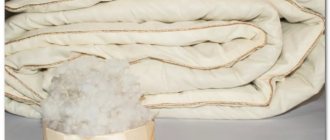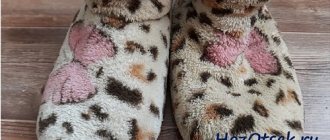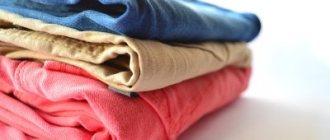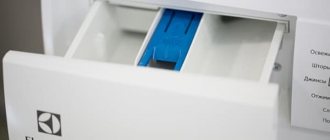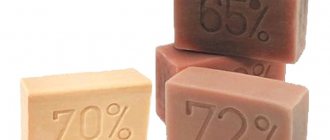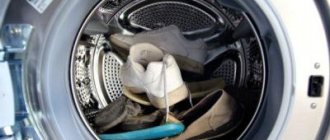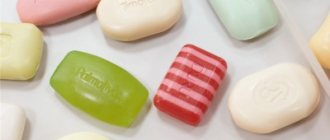Using bleach is the most efficient way to restore the original color of white laundry. Regular powder will not completely get rid of the gray or yellowish tint. And in order to choose the most suitable bleaching agent, it is advisable to understand the bleaching mechanism and navigate the available range.
- When does whitening become necessary?
- Types and purpose of bleaches
- How to use it correctly
- Rating of the best funds
- Expert advice
- Consumer Reviews
How do you bleach laundry?
When washing, you can use different types of bleaching agents:
- Based on active oxygen.
- Chlorine bleaches are cheaper bleaches. They are more aggressive and can cope with the most advanced situations. Housewives use chlorine-containing products to restore the snow-white color even to gray and faded linen.
The most popular bleach is “Whiteness”. This is a potent composition that can act not only on contaminated fabric surfaces, but also on metal and rubber. But chlorine solution is not harmful to plastic, which is why it is sold in plastic containers.
Security measures
Manufacturers indicate general safety rules for consumers on bleach labels:
- storage method;
- amount of substance recommended for use;
- precautionary measures.
If a new product is used, an allergy test should be performed first. To do this, you need to place a small piece of fabric in an aqueous solution with the substance. Then apply it to your skin for 3-5 minutes. If itching, redness, or rashes appear, bleach should not be used.
Particular attention should be paid to the use of chlorine-containing products. Be sure to wear protective gloves. If the manufacturer indicates that the concentrate needs to be diluted, the recommended proportions should be followed.
Store bleaches in closed containers, separate from food, in places inaccessible to children and pets. If the expiration date has expired, the product is thrown away. It is more profitable and safer to purchase packages with a small volume.
Do an allergy test
Wear protective gloves
Store products in closed containers, separate from food, in places inaccessible to children and pets.
How to use "Whiteness"?
Users are worried whether the washing machine itself will be damaged by the aggressive product? What if it corrodes some parts? There is no clear answer. To find out whether “Whiteness” is dangerous for the washing machine, you need to read the instructions: if the use of chlorine-containing solutions is prohibited, it will say so. Typically, “Whiteness” is prohibited from being used in SMA.
Devices in which the use of chloride compounds is permitted are equipped with plastic pipes and drums made of durable materials. You can also find out about the possibility of using products with chlorine by indirect evidence. Look into the cuvette where you are used to pouring powder - if there is an additional fourth compartment, then use is allowed. Bleaching is not recommended to be used too often - it can damage parts that come into contact with the chloride liquid.
But occasionally, such an event will be useful for the washing machine itself: chlorine-containing preparations will not only bleach things, but also kill the microbes inside and eliminate putrid and musty odors.
Where can I buy
Bos brand stain removers can be purchased at any household chemical store, Magnit department store, supermarket or online store. Most often in stores there is no more than 600 grams (powder bleach) or 1200 grams (liquid). Finding 1000 g of spray or a bag is more difficult. Order the product in store or online.
The yellowing and speckled Bos product is popular in Russia and abroad, and therefore has a large number of positive reviews. However, if the clothing is not heavily soiled, it should be discarded, as over time the fabric becomes thinner and its service life is shortened.
How to bleach gray laundry?
- Inspect items to be processed. Remove all metal accessories, if any. It happens that parts are not removable, then chlorine liquid is not suitable - take liquid without chlorine. Because of the latter, the metal darkens.
- Soak items in cold water and place them in the drum.
- When there are few things, 250 g of “Whiteness” is enough. Open the cuvette and look carefully at where to pour the bleach. It is allowed to add washing powder at the same time - if things need to be washed at the same time.
- Select a program with temperatures up to 45 °C. Can be whitened in rinse mode.
- Rinsing after treatment in a bleaching composition is carried out twice: it is important to rinse the laundry thoroughly to get rid of traces and the smell of the chemical substance. It is recommended to use air conditioning.
- For delicate fabrics, washing with bleach should not exceed a quarter of an hour. Watch the process so that things are not damaged.
General recommendations
After removing the tulle curtains from the windows, they are first shaken out of dust.
- Before loading, the tulle is carefully folded into a small envelope, rather than somehow stuffed into a drum.
- It is more convenient to use a mesh bag. If it is not there, skillful housewives place the tulle in a small pillowcase and make a few stitches so that the fabric does not move out.
- Conventional powders are not suitable for tulle curtains, since the chemical components of the composition are aggressive to delicate fabrics. Wash with gentle liquid powders, gels, shampoos.
- For tulle, it is necessary to halve the amount of detergent and set the additional rinse mode, as a lot of foam is formed.
- The program is installed without squeezing, nor is it squeezing manually. Shake lightly and hang in place. The tulle will dry, there will be no creases or folds left - no need to iron.
If the fabric is such that it is impossible to do without ironing, a lukewarm iron is suitable for fragile tulle curtains.
Many housewives, speaking on forums, advise soaking the tulle for several hours in a basin or directly in the car to remove stubborn dirt. Then the water is drained and the washing program is set.
Why do things spoil?
In order for the laundry to remain unharmed after treatment with “Whiteness”, it is not enough to know where to pour the product, you also need to know how to use it correctly. In case of violation of the rules:
- wear and tear of things accelerates;
- materials become thinner and worn out;
- things tear, holes appear on them.
Experts do not recommend using bleaches in SMA at all. But experienced people assure: it’s all about the technology of use and the correct dosage. If you do everything correctly, you can get rid of any stains, whiten fabrics and not damage the machine at all.
How to save faded white items at home
Few people know that you can bleach faded laundry using potassium permanganate. To do this, dissolve 2 tbsp. spoons of grated laundry soap or 100 grams of washing powder in hot water (0.5 buckets) and add 4 to 5 manganese crystals.
Before soaking the item, potassium permanganate must first be dissolved in water: the solution should have a faint pinkish tint. all the necessary components thoroughly until a thick foam is obtained and leave the yellowed or grayed products in the resulting solution overnight. In the morning, just rinse your clothes. This method is considered the most gentle, since manganese does not have a detrimental effect on the structure of the tissue.
Useful tips
Recommendations for hand washing:
- To maintain white color. Dilute two tablespoons of “Whiteness” in 10 liters of water. Mix thoroughly. Soak white items for 20 minutes. Rinse and wash.
- To eliminate gray tints, spots, yellowness. The solution is prepared in the same way as the previous one, but soaking lasts three times longer - a whole hour.
- For thick fabric. The undiluted composition is applied to problem areas. Wait no more than a minute and soak everything in the same solution for 60 minutes. Then wash by hand.
Recommendations from experienced housewives and experts regarding whitening in SMA:
- Pour the product not into the compartment, but directly into the drum - then fewer elements of the washing machine will come into contact with the aggressive liquid.
- Before pouring into the drum, be sure to dilute the chlorine-containing compound. Look at the label - it indicates in what proportions to dilute. Linen is soaked in cold water before washing.
- Before starting the process, it is advisable not to be lazy and check the drum’s susceptibility to bleach. Wet a rag and rub the drum with it - look at the result. If there are no changes, apply.
- Do not bleach in too hot water: this will have a bad effect on the machine and laundry.
When does whitening become necessary?
White linen needs to be washed more often than others, since it is on it that all kinds of dirt are most noticeable. However, after 3-4 washes it loses its original whiteness, turns gray and some stains on it still remain noticeable. The main reasons for the loss of whiteness are the following:
- incorrect choice of program and temperature in an automatic machine;
- storing dirty laundry in a poorly ventilated basket;
- excessively hard water in the water supply system;
- drying in direct sunlight.
Poor quality powder is also one of the reasons for the loss of white color.
cleanhouse.bishkek
tanyasha_der
heitmann_russia
liudmilat6970
Features of using bleach
When working with aggressive chemicals, it is important to follow safety rules - not only sheets and washing machine parts can be damaged, but you too. Safety rules when working with chlorine-containing solutions:
- When bleaching, wear gloves and a mask. Contact of the substance with the skin causes burns, corrosion, and allergies.
- It is not advisable to use a stain remover on colored fabrics - the stain will come out, but along with it the color will lose its saturation.
- Do not use on leather, wool and silk items. Stains from them are generally very difficult to remove; compositions with chlorine will only spoil the material or cause the appearance of yellowness. Use is allowed on cotton, linen and synthetic fabrics.
- If the container with “Belizna” has been opened for a long time - six months or more, it is not worth using it, since the chemical effect of the composition is noticeably reduced.
What is sodium percarbonate
Sodium percarbonate is a chemical compound with the formula Na2H3CO6, also called solid hydrogen peroxide. It is a colorless solid very similar to bicarbonate. Widely used in powder bleach cleaners. But they usually contain other compounds as surfactants.
The use of sodium percarbonate is interesting because it does not harm the environment. Because upon contact with water it dissociates into hydrogen peroxide and sodium carbonate.
Sodium percarbonate, environmentally friendly bleach for clothes. Which also has many other uses that will surprise you. A universal product that, together with bicarbonate, makes an inseparable pair for the cleanliness of your clothes and cleaning the house.
It was opened just a few years ago. Its creators were looking for more environmentally friendly alternatives to washing clothes.
I'm going to tell you all the secrets of sodium percarbonate. Firstly, what is it and what is it used for. Secondly, how you can add it to your daily cleaning routine without any effort. And not only. Because it is an unusual product that can replace a lot of things in our everyday life.
Oxygen bleaches are an excellent solution for whitening white clothes. And above all, color stain removers in one product, since they do not contain chlorine, are an ideal safe and convenient alternative.
If you don't already use one or don't know which one to choose, in this guide I will select the best oxygen bleaches for clothes. These will be the bleaches available in the market that are not easy to choose from so that you can care for your clothes as if they were new.
Oxygen bleaches are possibly a disintegrator, stain remover and highlighter for original fabric colors.
